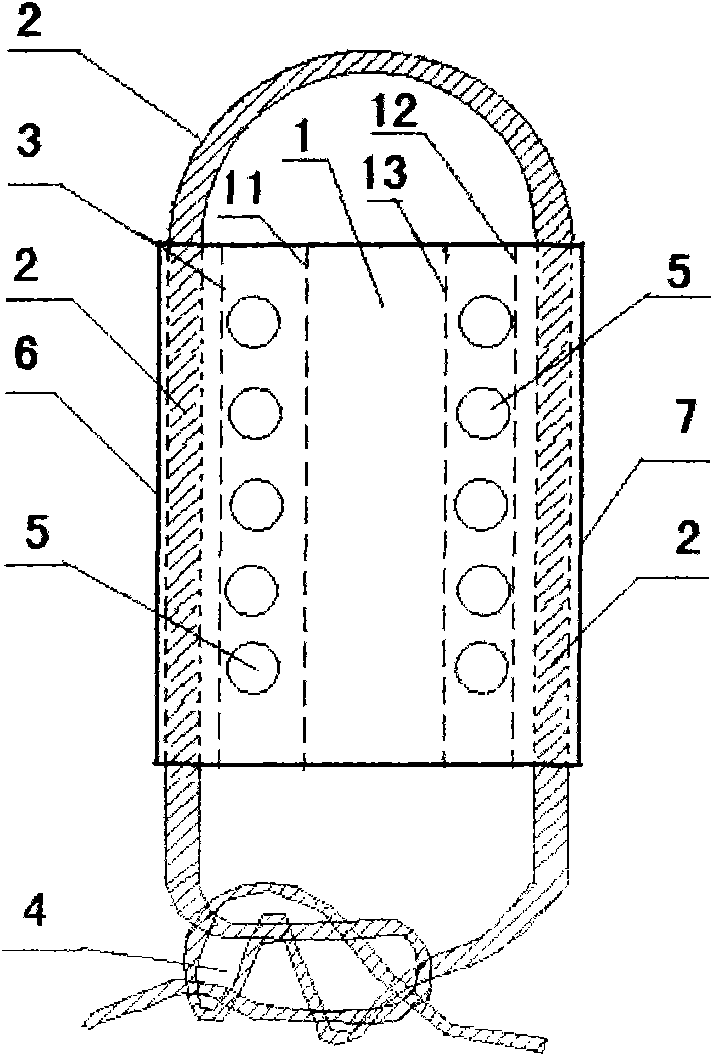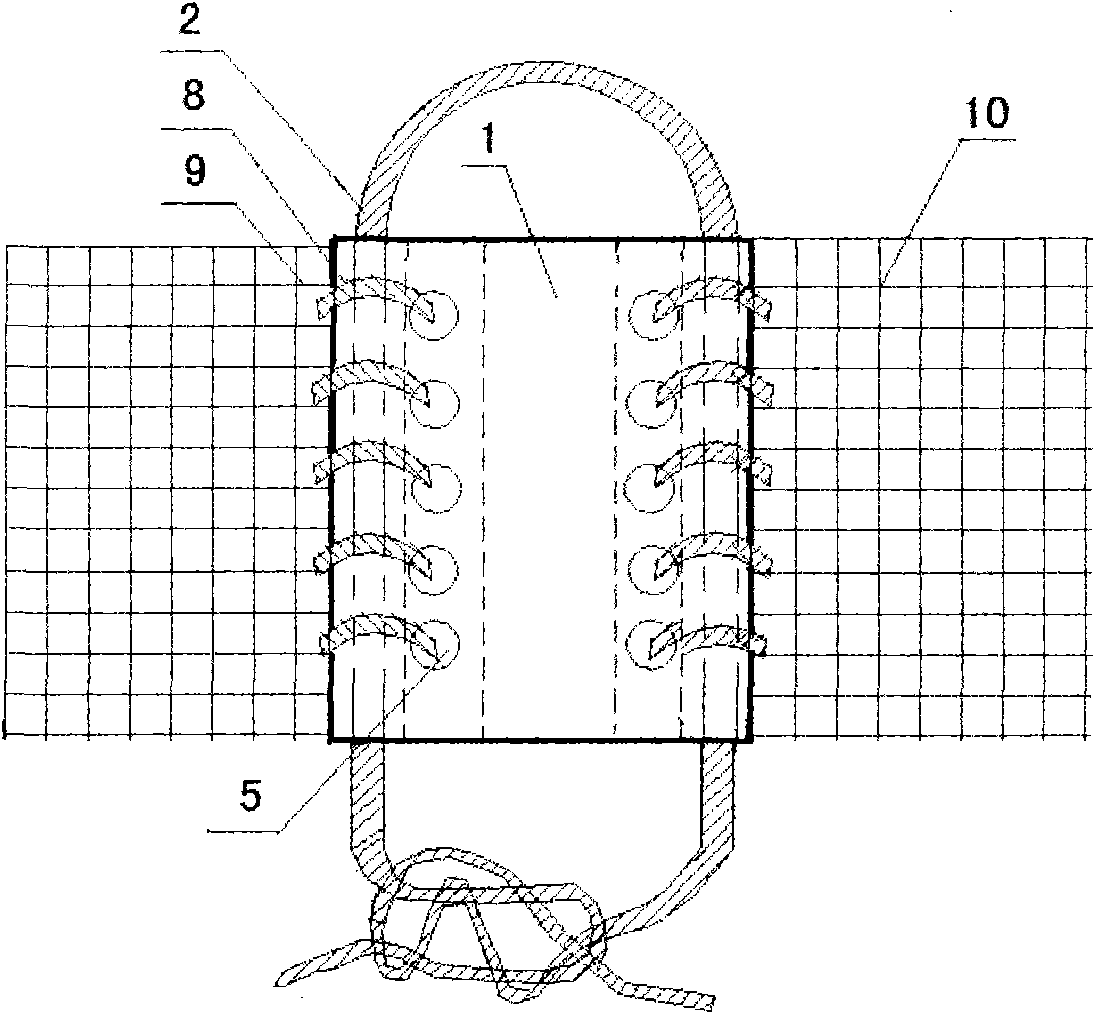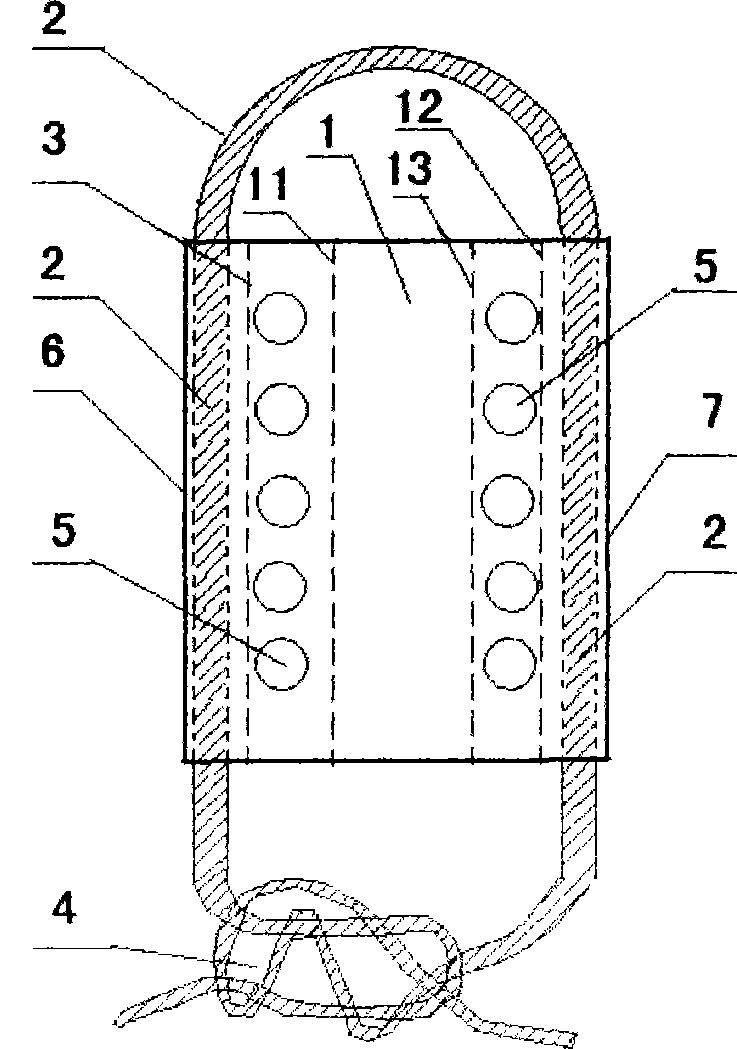Adjacent netting semi-flexible connection method for copper alloy mesh grid
A braided net and copper alloy technology, applied in fish farming, application, climate change adaptation, etc., can solve problems such as difficulty in meeting cage facilities, poor safety and fishery adaptability, and damage to wires used to connect braided nets. Achieve the effect of practical operation method, saving breeding cost and saving processing time
- Summary
- Abstract
- Description
- Claims
- Application Information
AI Technical Summary
Problems solved by technology
Method used
Image
Examples
Embodiment Construction
[0009] The following is an example of a copper alloy braided mesh (the braided mesh is a square mesh) with three adjacent mesh center distances being 39.9 millimeters and the connection length of the adjacent meshes of the copper alloy braided mesh being 1.0 meters. The best way is:
[0010] figure 1 1 in represents the plastic-coated cylindrical webbing, figure 1 The 2 in it represents the rope used for making semi-soft connectors, figure 1 3 in represents the first seam on the left side of the plastic-coated cylindrical webbing, figure 1 The 4 in it represents the double dead knot made by the two ends of the rope for making the semi-soft connector, figure 1 5 in represents the eye ring on the plastic-coated cylindrical webbing, figure 1 6 in represents the left side of the plastic-coated cylindrical webbing, figure 1 7 in represents the right side of the plastic-coated cylindrical webbing, figure 1 11 in represents the second suture on the left side of the plastic-coat...
PUM
| Property | Measurement | Unit |
|---|---|---|
| diameter | aaaaa | aaaaa |
Abstract
Description
Claims
Application Information
 Login to View More
Login to View More - R&D
- Intellectual Property
- Life Sciences
- Materials
- Tech Scout
- Unparalleled Data Quality
- Higher Quality Content
- 60% Fewer Hallucinations
Browse by: Latest US Patents, China's latest patents, Technical Efficacy Thesaurus, Application Domain, Technology Topic, Popular Technical Reports.
© 2025 PatSnap. All rights reserved.Legal|Privacy policy|Modern Slavery Act Transparency Statement|Sitemap|About US| Contact US: help@patsnap.com



